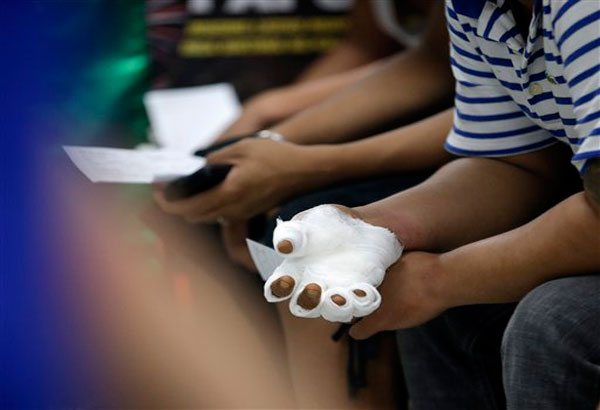EcoWaste warns of toxic metals in 14 lucky charms
MANILA, Philippines - An environmental group found traces of lead and other toxic metals in the 14 lucky charms and ornaments that are being sold in Binondo in time for the Chinese New Year.
“Our scientific findings indicate the presence of lead and other hazardous substances in some popular Chinese New Year charms and curios,” Aileen Lucero of the EcoWaste Coalition’s Project Protect said.
According to Lucero, they purchased 30 lucky charms in Binondo, Manila from Jan. 18 to 20 and tested these samples using X-ray fluorescence device and chemical analysis last Jan. 20.
Out of 30 the samples, 14 products (47 percent) were found to contain toxic metals such as arsenic, cadmium, chromium, lead and mercury.
Arsenic, cadmium, lead and mercury belong to the World Health Organization’s “Ten Chemicals of Major Public Health Concern” and are likewise included, along with chromium, in the “Priority Chemicals List” of the Philippines.
Lead, which is highly toxic and harmful to human health even in very low doses, can damage the brain and cause cancer, birth defects and reproductive harm.
Among the samples tested, the dragon figurine got the highest toxicity in terms of lead content at 14,800 parts per million (ppm), arsenic and cadmium.
Other lucky charms and ornaments that were tested include feng shui amulets, bagua, bracelets, piggy bank, door signage, dragons and other animal figurines, joss paper and sticks, kiat kiat money tree, red fish hanging decor, rice urn, and other enhancers and activators for good health and fortune.
Lucero added, “The toxic chemicals have nothing to do with the auspicious stuff many Filipinos buy in Chinatown in the hope of stimulating good luck and fending off misfortune. Manufacturers should substitute toxic with non-toxic ingredients, and importers, distributors, sellers and consumers should all demand nothing less than safe products.”
- Latest
- Trending
































